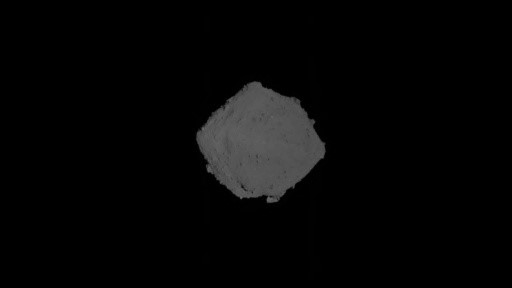Japan Is Landing on an Asteroid Today and You Can Watch It Live!
Update for 8 p.m. EST: The Hayabusa2 spacecraft has successfully landed on asteroid Ryugu in its attempt to collect samples from the surface. After the attempt, the probe backed away to a safe distance. Read our full story here.
Japan's Hayabusa2 spacecraft is touching down on an asteroid called Ryugu to grab a sample — and you can watch the action live.
The maneuvers will be broadcast live by the Japan Aerospace Exploration Agency (JAXA), which manages the spacecraft, beginning today (Feb. 21) at 4:45 EST (2145 GMT). You can watch live on Space.com courtesy of JAXA, or through the agency's YouTube.
JAXA began descent operations at Ryugu on Feb. 21 around 6:30 a.m. local time at JAXA's headquarters (Feb. 20 around 4:30 p.m. EST, 2130 GMT), with the decision to approach the asteroid coming about 6 hours later.

Before the descent began, Hayabusa2 had been hovering in its "home position," about 12.4 miles (20 kilometers) above the asteroid's surface. The spacecraft has been creeping closer over the subsequent hours, sending images from its navigation camera back about twice an hour. Those images take about 19 minutes to reach Earth because of the distance to Ryugu. During touchdown itself, the spacecraft won't be properly angled to continue sending pictures home.
Over the first few hours of the descent, the spacecraft lowered itself at a speed of about 35 inches/second (90 centimeters/second), which was about twice as fast as JAXA had originally planned in order to make up for starting the descent about 5 hours later than scheduled. By Feb. 21 at about 9:15 a.m. EST (1415 GMT), Hayabusa was just 1.8 miles (3 km) above the surface.
@haya2e_jaxa has real-time imagery from today's #Ryugu asteroid approach. Check it out here: https://t.co/pUTbBceeK3 I made a thing: pic.twitter.com/0Ohg78zSFZFebruary 21, 2019
Hayabusa2 is scheduled to touch down around 6:06 p.m. EST (2306 GMT). At the surface, it will shoot what is essentially a bullet into Ryugu's gravelly surface and suck up the resulting debris to bring back to Earth.
Get the Space.com Newsletter
Breaking space news, the latest updates on rocket launches, skywatching events and more!
Once sampling is complete, it will take the spacecraft about 11 hours to return to its "home position." The spacecraft still has more work to do at Ryugu, including releasing one more small rover onto the asteroid's surface, before heading home at the end of this year.
Email Meghan Bartels at mbartels@space.com or follow her @meghanbartels. Follow us on Twitter @Spacedotcom and on Facebook.
Join our Space Forums to keep talking space on the latest missions, night sky and more! And if you have a news tip, correction or comment, let us know at: community@space.com.

Meghan is a senior writer at Space.com and has more than five years' experience as a science journalist based in New York City. She joined Space.com in July 2018, with previous writing published in outlets including Newsweek and Audubon. Meghan earned an MA in science journalism from New York University and a BA in classics from Georgetown University, and in her free time she enjoys reading and visiting museums. Follow her on Twitter at @meghanbartels.









